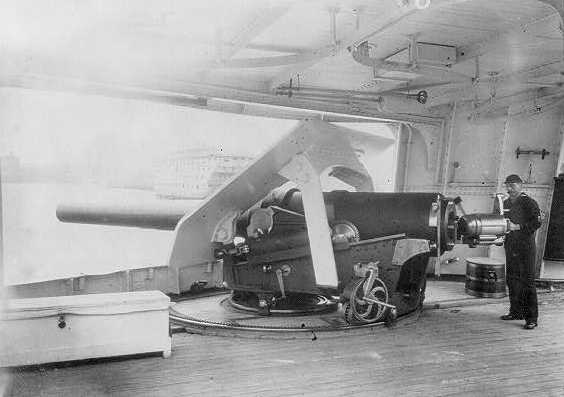|
The Mark 1 was the original 6" (15.2 cm) BL gun used on the "ABCD" squadron (Atlanta, Boston, Chicago and Dolphin). It consisted of A tube, jacket, 16 hoops and one elevating band with integral trunnions and a screwed on muzzle bell. Mark 2, 3 and 4 had 10 hoops. There was only one Mark 7 gun, which was a Mark 4 modified to take bag ammunition. The 30 caliber weapons were primarily used on cruisers while the 35 and 40 caliber weapons were used on battleships. Besides the guns with "Mark" number designations, there was a single early wire-wound 6"/30 (15.2 cm) prototype gun that was not assigned a Mark number and which apparently did not enter service. Almost all of these guns were condemmed shortly after World War I. |

6"/30 (15.2 cm) gun on the Cruiser Atlanta
circa 1895
|
| .
|